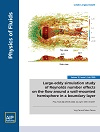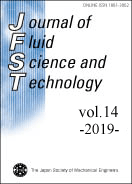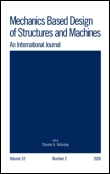
MECCANICA
Scope & Guideline
Bridging Disciplines in Physics and Mechanical Engineering
Introduction
Aims and Scopes
- Mechanics of Materials:
Research in this area includes the study of stress, strain, and deformation behaviors in various materials, particularly under complex loading conditions. It emphasizes the development of new materials and the analysis of their mechanical properties. - Fluid Dynamics and Thermodynamics:
This scope covers computational and experimental studies related to fluid flow, heat transfer, and thermodynamic processes. It includes the exploration of fluid-structure interactions and the impact of fluid dynamics on mechanical systems. - Robotics and Automation:
The journal features advancements in robotic systems, including modeling, control, and application of robotic mechanisms in various fields. Research often focuses on enhancing performance, reliability, and efficiency in robotic systems. - Vibration and Dynamics:
This area investigates the dynamic response of mechanical systems, including vibrations, stability, and control methods. It encompasses both theoretical and experimental approaches to understand and mitigate vibrational impacts. - Topology Optimization and Structural Mechanics:
Research under this theme involves the optimization of structures for weight reduction and performance enhancement, utilizing advanced computational methods to achieve efficient designs. - Numerical Methods and Computational Mechanics:
The journal publishes studies on the development and application of numerical techniques for solving complex engineering problems, including finite element analysis, computational fluid dynamics, and optimization algorithms. - Bio-inspired Engineering and Materials:
This unique contribution involves the application of biological principles in engineering design and materials science, focusing on innovations that mimic biological systems for improved performance.
Trending and Emerging
- Smart Materials and Structures:
Research in this area is rapidly growing, focusing on materials that can respond adaptively to environmental changes, enhancing the performance and functionality of engineering systems. - Computational Intelligence and Machine Learning in Engineering:
The integration of artificial intelligence and machine learning techniques into engineering design and analysis is on the rise, facilitating more efficient problem-solving and predictive modeling. - Sustainable Engineering Practices:
There is an increasing emphasis on sustainability and eco-friendly practices within mechanical engineering, reflecting a global shift towards reducing environmental impact and promoting resource efficiency. - Advanced Robotics and Autonomous Systems:
The development and application of advanced robotics, including collaborative robots and autonomous systems, are trending topics, driven by advancements in AI and sensor technologies. - Bio-mechanics and Medical Engineering:
Research at the intersection of mechanical engineering and biology, particularly in the context of medical devices and rehabilitation technologies, is emerging as a significant area of interest. - Multi-Physics Modeling and Simulation:
The trend towards integrating multiple physical phenomena in simulations is gaining traction, allowing for a more comprehensive understanding of complex engineering problems.
Declining or Waning
- Conventional Manufacturing Processes:
Research focusing on traditional manufacturing methods has diminished, as the field increasingly embraces advanced manufacturing techniques such as additive manufacturing and smart materials. - Static Structural Analysis:
While still relevant, the focus on purely static analyses is waning as dynamic and transient analyses become more critical in addressing real-world engineering problems. - Simple Mechanical Systems:
Studies centered on basic mechanical systems without complex interactions or advanced materials have seen a decline, as there is a growing emphasis on integrating multi-physics and complex system behaviors. - Classical Control Systems:
Research in conventional control theory is becoming less prominent, with a shift towards advanced control strategies that incorporate machine learning and adaptive systems. - Theoretical Mechanics without Practical Applications:
There is a noticeable reduction in purely theoretical studies that lack practical application, as the journal increasingly prioritizes research with clear implications for engineering practice.
Similar Journals

Journal of Computational Applied Mechanics
Bridging Theory and Practice in Mechanical EngineeringJournal of Computational Applied Mechanics, published by UNIV TEHRAN, DANISHGAH-I TIHRAN, is an influential open-access journal that has been disseminating significant research findings since its inception in 2012. With a dedicated focus on the fields of Computational Mechanics, Mechanical Engineering, and Mechanics of Materials, this journal has garnered a Q3 ranking in multiple relevant categories as of 2023, indicating its burgeoning impact within the academic community. Although precise HIndex scores are currently unavailable, the journal's recognition is underscored by its Scopus rankings, placing it in the middle tier among its peers. The journal invites researchers, professionals, and students to contribute to and engage with the continually evolving discourse in applied mechanics, fostering innovation through the dissemination of quality research. As an open-access journal, it ensures that findings are readily accessible to a global audience, thereby enhancing collaboration and knowledge sharing in the scientific community.

Journal of Theoretical and Applied Mechanics
Bridging Theory and Application in Mechanics ResearchJournal of Theoretical and Applied Mechanics, published by the Polish Society of Theoretical and Applied Mechanics, stands as a leading platform for disseminating cutting-edge research in the realms of theoretical and applied mechanics. With its ISSN 1429-2955 and E-ISSN 1429-2955, this Open Access journal has been fostering academic dialogue since 2006, making knowledge readily accessible to researchers and practitioners alike. Based in Warsaw, Poland, the journal encompasses a wide breadth of topics within mechanics, appealing to a diverse readership including researchers, professionals, and students. The journal's current Scopus ranking places it within the 30th percentile of the field, emphasizing its relevance and contribution to the discipline. As it converges from 2007 to 2024, the Journal of Theoretical and Applied Mechanics is pivotal for those seeking to advance understanding and innovation in mechanical engineering and mathematics, making it an essential resource for anyone involved in these critical areas of study.

ACTA MECHANICA SINICA
Pioneering Insights in Computational MechanicsACTA MECHANICA SINICA is a prestigious journal published by SPRINGER HEIDELBERG that has been a cornerstone in the field of mechanical engineering and computational mechanics since its inception in 1985. Based in Germany, this leading publication is internationally recognized for its high impact, holding a Q1 ranking in both Computational Mechanics and Mechanical Engineering as of 2023. It is positioned prominently within the academic community, evidenced by its respectable Scopus rankings—#21 in Computational Mechanics and #159 in Mechanical Engineering, both within the 76th percentile. Researchers and professionals alike turn to ACTA MECHANICA SINICA for cutting-edge research, innovative methodologies, and insights that drive advancements in the discipline. Although the journal is not open access, its rigorous peer-review process ensures the publication of high-quality, impactful research that is essential for scholars and practitioners aiming to stay at the forefront of mechanical engineering advancements.

Mechanical Sciences
Connecting global minds through open-access engineering research.Mechanical Sciences is a prominent open-access journal published by COPERNICUS GESELLSCHAFT MBH since 2010, dedicated to advancing the field of mechanical engineering and its multidisciplinary applications. Operating from Göttingen, Germany, the journal has established a vital platform for researchers and professionals alike, facilitating the sharing of original research, reviews, and innovative methodologies across various domains, including civil and structural engineering, control and systems engineering, fluid flow, industrial engineering, and mechanics of materials. With a current impact factor placing it in the Q3 category across several engineering disciplines, Mechanical Sciences provides a valuable resource that not only highlights emerging trends but also contributes to the ongoing discourse within the engineering community. The journal's commitment to open access ensures that its content is widely accessible, encouraging collaboration and knowledge sharing among students, educators, and industry experts worldwide. As it continues to converge towards 2024, Mechanical Sciences remains an essential reference for anyone invested in the mechanics of engineering and related fields.

PHYSICS OF FLUIDS
Bridging Academia and Industry in Fluid ResearchPHYSICS OF FLUIDS is a premier journal published by AIP Publishing that serves as a vital resource for the fluid mechanics community. With an impressive impact factor and a consistent ranking in the Q1 quartile across multiple related disciplines—including Computational Mechanics, Condensed Matter Physics, Fluid Flow and Transfer Processes, Mechanical Engineering, and Mechanics of Materials—this journal is renowned for disseminating high-quality research in the dynamic field of fluid dynamics. Covering a wide range of topics, from fundamental fluid mechanics to advanced computational modeling, PHYSICS OF FLUIDS plays a crucial role in advancing understanding and fostering innovation in both academic and industrial applications. With its strong reputation and significant readership, this journal is essential for researchers, professionals, and students seeking to stay updated on the latest developments in fluid physics.

Journal of Applied Mechanics and Technical Physics
Advancing the Frontiers of Mechanics and PhysicsJournal of Applied Mechanics and Technical Physics is a distinguished publication that serves as a vital resource for researchers and professionals in the realms of mechanical engineering, mechanics of materials, and condensed matter physics. Published by MAIK NAUKA/INTERPERIODICA/SPRINGER, this journal has been committed to disseminating high-quality research since its inception in 1965. With a noted presence in the academic community, it holds a respectable Q3 ranking in multiple categories as of 2023, indicating its relevance and contribution to the field. Although it does not currently offer open access, the journal provides valuable insights and advancements through its rigorous peer-review process. Covering a broad spectrum of topics in applied mechanics and technical physics, it aims to foster innovation and dialogue among scientists, engineers, and scholars alike. Located in the United States, the journal continues to make significant strides in bridging the gap between theoretical research and practical applications, making it an essential read for anyone engaged in these dynamic fields.

International Journal of Mechanics and Materials in Design
Advancing the Frontiers of Mechanics and Material DesignInternational Journal of Mechanics and Materials in Design is a leading publication in the field of mechanical engineering and materials science, published by Springer Heidelberg. With an impressive impact factor, it holds esteemed rankings as Q1 in both Mechanical Engineering and Mechanics of Materials, and Q2 in Materials Science for the year 2023, solidifying its reputation as a significant contributor to the advancement of design methodologies. The journal focuses on the intersection of mechanics and materials, encouraging innovative research that addresses contemporary challenges faced in engineering disciplines. Researchers and professionals alike can benefit from accessing cutting-edge studies contributing to various applications, making it an invaluable resource for staying informed in this dynamic field. While the journal operates under a subscription model, its comprehensive reviews and high-quality original research foster a deeper understanding of material behavior and design principles, thus supporting the academic growth and professional development of its readers.

Moscow University Mechanics Bulletin
Navigating the Future of Engineering and MechanicsMoscow University Mechanics Bulletin, published by PLEIADES PUBLISHING INC, is a dedicated journal that has been influencing the fields of mechanical engineering and mechanics since its inception. With an ISSN of 0027-1330 and E-ISSN of 1934-8452, this journal serves as a crucial platform for advancing knowledge in mathematics, mechanical engineering, and mechanics of materials. Though currently indexed in the Q4 category across these disciplines, it offers a unique space for researchers and professionals to engage with emerging theories, experimental results, and practical applications. With a converged publication history spanning from 1973 to 1987, and continuing from 2007 to 2024, the journal remains relevant in today’s academic landscape. Though it operates under traditional access models, the journal's global reach aims to connect diverse voices in engineering research. Aspiring researchers and seasoned professionals alike will find valuable insights and a robust discourse that contribute to their respective fields.

Journal of Fluid Science and Technology
Empowering Engineers with Open Access KnowledgeThe Journal of Fluid Science and Technology, published by the Japan Society of Mechanical Engineers, serves as a pivotal platform for the dissemination of cutting-edge research in the fields of fluid mechanics and mechanical engineering. With an ISSN of 1880-5558, this Open Access journal has been dedicated to advancing the understanding of fluid flow and transfer processes since its establishment. As of 2023, it holds a significant position with a Q3 quartile ranking in both Fluid Flow and Transfer Processes and Mechanical Engineering categories. Researchers and practitioners are encouraged to explore the journal’s extensive collection of articles, contributing to the body of knowledge that impacts various practical applications in engineering and technology. The journal, which has established a reputation for quality amidst a competitive landscape, further fosters international collaboration and education by providing unrestricted access to its content. For professionals and students alike, the Journal of Fluid Science and Technology represents an invaluable resource for the latest findings and innovations in fluid dynamics and mechanical systems.

MECHANICS BASED DESIGN OF STRUCTURES AND MACHINES
Transforming Concepts into Engineering RealitiesMECHANICS BASED DESIGN OF STRUCTURES AND MACHINES is a premier academic journal published by Taylor & Francis Inc, dedicated to advancing knowledge in the fields of mechanical engineering, aerospace engineering, and more. With an impressive Q1 ranking in multiple engineering and physics categories for 2023, the journal is recognized for its high impact and critical contributions to research, as evidenced by its Scopus rankings that position it in the top percentiles across various disciplines. The journal focuses on innovative methodologies and applications pertaining to mechanics-based design, making it an essential resource for researchers, professionals, and students looking to enhance their understanding and application of design principles in structures and machines. As an open access publication, it ensures widespread dissemination of knowledge and facilitates collaboration across the global research community. For those interested in the latest developments and scholarly discussions, MECHANICS BASED DESIGN OF STRUCTURES AND MACHINES offers a vital platform that nurtures interdisciplinary dialogue and practical applications.